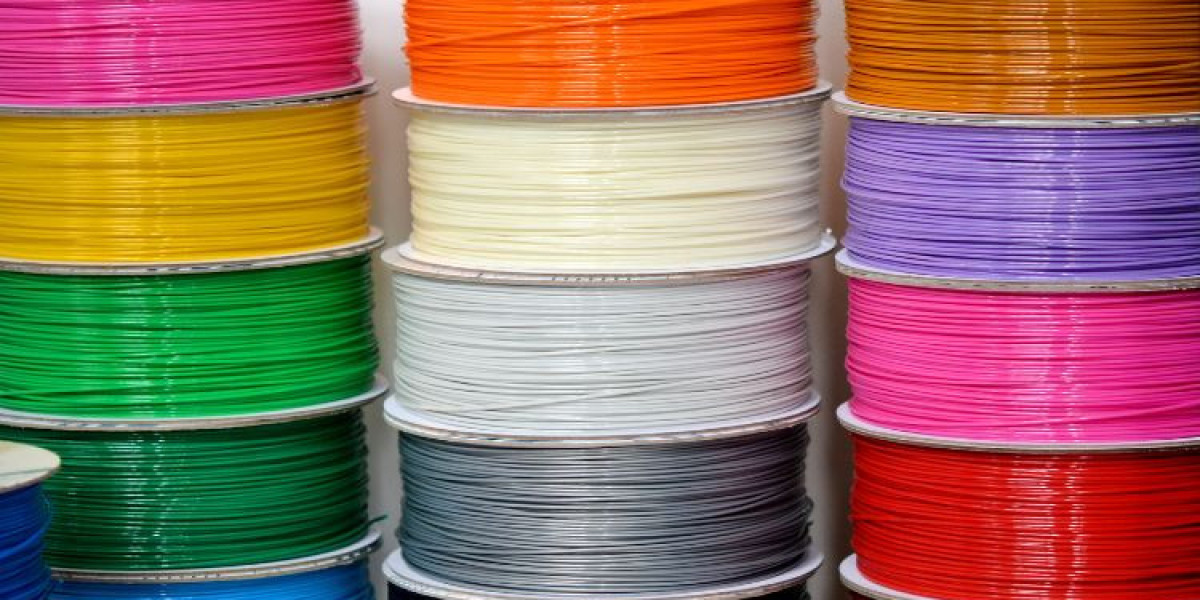3D printing, also known as additive manufacturing, is a technology that allows creating physical objects from digital models by depositing layers of material on top of each other. 3D printing has been widely adopted in various industries, such as aerospace, automotive, medical, and consumer goods, due to its advantages over traditional manufacturing methods, such as reduced material waste, lower production costs, faster prototyping, and greater design flexibility.
However, 3D printing also poses some environmental challenges, such as the consumption of energy and resources, the generation of emissions and pollutants, and the disposal of used or unwanted 3D printed objects. According to a report by Research and Markets, the global 3D printing materials market size attained a value of approximately USD 2.31 billion in 2023. The market is further expected to grow in the forecast period of 2024-2032 at a CAGR of 26.9%, reaching a value of around USD 19.62 billion by 2032. This indicates that the demand for 3D printing materials is increasing rapidly, and so is the need for more sustainable solutions.
The Rise of Sustainability in 3D Printing
One of the main drivers of sustainability in 3D printing is the growing awareness of the environmental impact of traditional manufacturing processes, which often involve the use of large amounts of raw materials, energy, water, and chemicals, as well as the generation of waste and emissions. According to a study by the World Economic Forum, manufacturing accounts for about 20% of global greenhouse gas emissions, 20% of global water use, and 30% of global waste generation.
To address these issues, 3D printing offers a more efficient and eco-friendly alternative, as it enables the creation of complex and customized objects with minimal material waste, lower energy consumption, and reduced transportation and logistics costs. Moreover, 3D printing also allows the use of sustainable materials, such as biodegradable and recyclable materials, which can further reduce the environmental footprint of the manufacturing industry.
Advancements in Biodegradable Materials for 3D Printing
Biodegradable materials are materials that can be broken down by natural processes, such as bacteria, fungi, or enzymes, into harmless substances, such as water, carbon dioxide, and organic matter. Biodegradable materials are usually derived from renewable sources, such as plants, animals, or microorganisms, and can offer several benefits for 3D printing, such as lower toxicity, higher biocompatibility, and lower environmental impact.
Some of the most common biodegradable materials used in 3D printing are polylactic acid (PLA), polyhydroxyalkanoates (PHA), and starch-based materials. PLA is a thermoplastic polymer made from corn starch or sugarcane, and it is one of the most widely used materials in 3D printing, especially for consumer and hobbyist applications. PLA is easy to print, has good mechanical properties, and can be composted under industrial conditions. PHA is a family of biopolymers produced by bacterial fermentation of organic waste, such as vegetable oil, sugar, or starch. PHA has similar properties to PLA, but it can also be degraded in soil and marine environments. Starch-based materials are made from starch extracted from plants, such as potatoes, rice, or wheat, and they can be blended with other biopolymers, such as PLA or PHA, to improve their printability and performance.
Recyclable Materials: Closing the Loop in 3D Printing
Recyclable materials are materials that can be collected, processed, and reused for new 3D printing projects, either by melting, grinding, or chemically transforming them into new raw materials. Recyclable materials can help to reduce the consumption of virgin materials, the generation of waste, and the emission of greenhouse gases in 3D printing, as well as to save costs and resources.
Some of the most common recyclable materials used in 3D printing are thermoplastics, such as acrylonitrile butadiene styrene (ABS), polycarbonate (PC), and polyethylene terephthalate (PET). These materials can be melted and extruded into new filaments or pellets, which can be used for new 3D printing projects. However, this process can also cause some degradation of the material properties, such as color, strength, and flexibility, due to the exposure to heat and oxygen. Therefore, some additives, such as stabilizers, antioxidants, or colorants, may be needed to improve the quality and performance of the recycled materials.
Another way to recycle materials in 3D printing is to grind them into fine powder, which can be used for selective laser sintering (SLS) or binder jetting, which are 3D printing techniques that use a laser or a binder to fuse powder particles into solid objects. This process can avoid the degradation of the material properties caused by melting, and can also allow the use of different materials, such as metals, ceramics, or composites, which can be difficult to melt or extrude. However, this process can also require some preprocessing, such as cleaning, sorting, and sieving, to ensure the purity and uniformity of the powder.
A third way to recycle materials in 3D printing is to chemically transform them into new materials, such as monomers, oligomers, or polymers, which can be used for stereolithography (SLA) or digital light processing (DLP), which are 3D printing techniques that use a light source to cure liquid resin into solid objects. This process can allow the creation of new materials with different properties and functionalities, such as biodegradability, conductivity, or fluorescence. However, this process can also involve the use of solvents, catalysts, or other chemicals, which can pose some environmental and health risks.
Benefits of Sustainable 3D Printing Materials
The use of biodegradable and recyclable materials in 3D printing can offer several benefits for the environment, the economy, and the society, such as:
- Reduced waste and lower carbon footprint: By using biodegradable and recyclable materials, 3D printing can minimize the amount of material waste and emissions generated in the manufacturing process, as well as the disposal of the 3D printed products. This can help to conserve natural resources, reduce landfill space, and mitigate climate change.
- Material cost savings and potential for circular economy models: By using biodegradable and recyclable materials, 3D printing can lower the material costs and increase the material efficiency, as less virgin materials are needed and more materials can be reused. This can also create new opportunities for circular economy models, which aim to eliminate waste and maximize value by designing products that can be repaired, reused, or recycled.
- Enhanced innovation and customization: By using biodegradable and recyclable materials, 3D printing can enable the creation of new and novel materials with different properties and functionalities, such as biocompatibility, conductivity, or fluorescence. This can also allow the customization of products according to the specific needs and preferences of the customers, such as shape, size, color, or texture.
Challenges and Future Outlook
Despite the benefits, biodegradable and recyclable materials also face some challenges and limitations in 3D printing, such as:
- Technical issues and trade-offs: Biodegradable and recyclable materials may have some technical issues and trade-offs in terms of printability, performance, and quality, compared to conventional materials. For example, biodegradable materials may have lower thermal stability, mechanical strength, and dimensional accuracy, while recyclable materials may have lower color fidelity, flexibility, and durability. Therefore, some optimization and standardization of the material properties, processing parameters, and testing methods may be needed to ensure the reliability and consistency of the 3D printing results.
- Regulatory and ethical barriers: Biodegradable and recyclable materials may also face some regulatory and ethical barriers, especially in sensitive applications, such as medical, biotechnology, or food. For example, biodegradable materials may require some certification and approval from the relevant authorities, such as the Food and Drug Administration (FDA) or the European Medicines Agency (EMA), to ensure their safety and efficacy, while recyclable materials may raise some concerns about the traceability and quality of the recycled materials, as well as the potential contamination and infection risks. Therefore, some regulation and supervision of the material sources, production processes, and end-of-life scenarios may be needed to ensure the compliance and accountability of the 3D printing industry.















